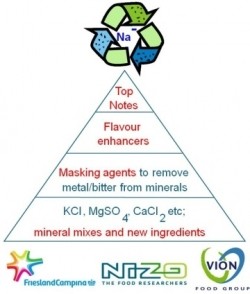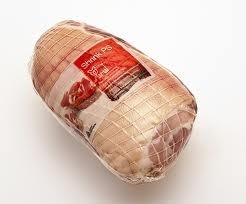Clean label method developed for salt reduction in cheese and meat

The Sodium Minus project has been running since 2008 and has already enabled the participating food manufacturers to reduce salt levels.
FrieslandCampina has been able to introduce Milner cheese with 40 per cent less salt and Vion Food group has cut out 800 tonnes of salt from its gammon and bacon products in the UK.
Pyramid approach
Project manager Janny van Gijssel of Nizo told this publication that the team has created a pyramid like approach to salt reduction. This begins at the base with salt replacers, and then with masking agents in the middle and flavour enhancers and top notes topping off the pyramid.
For different cheeses and meats, the exact composition of the solution varies, but van Gijssel said the approach remains the same.
And underpinning the overall approach is a focus on finding natural taste and aroma compounds to satisfy demand for clean label products. Mark Kats, business development manager dairy at Nizo, said this was a top priority for the food industry when considering options for salt reduction.
Key challenges
Reducing the salt content in cheese and meat is not a straightforward process because salt plays a key role in flavour and aroma development as well as preservation and texture.
Working within the bounds of a 30- 40 per cent reduction in salt levels, Wim Engels, senior scientist dairy flavour at Nizo, said the main concerns were flavour and aroma.
Aroma is intimately connected to flavour perception so Engels said one of the key challenges was the identification of aromas that create a perception of saltiness.
In order to identify the right flavour and aroma compounds, Nizo had to test out many different potential combinations and solutions. For cheese Engels said having a micro cheese model capable of making 600 mini cheeses a day of 0.2g allowed for quick screening of starters.
This helped the scientists make rapid progress - Van Gijssel identified this as one of the most rewarding aspects of the project.
“I find it very rewarding to work towards such a clear health benefit for consumers and that in such a short time the results of our joint work can be found in the supermarket.”
She added that the willingness of Vion and FrieslandCampina to come together with Nizo and share experience and expertise was another highlight from the project.
FrieslandCampina and Vion plan to continue their work to make further reductions in the salt content of their cheese and meat products.






